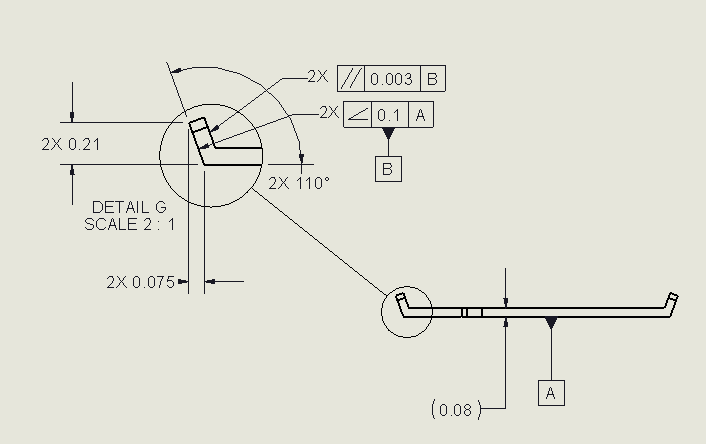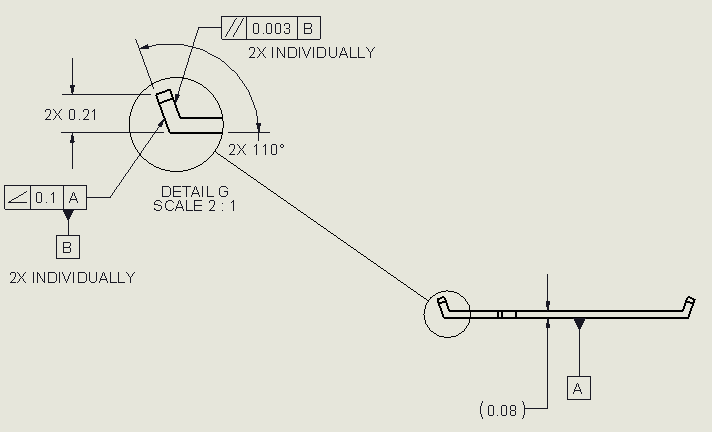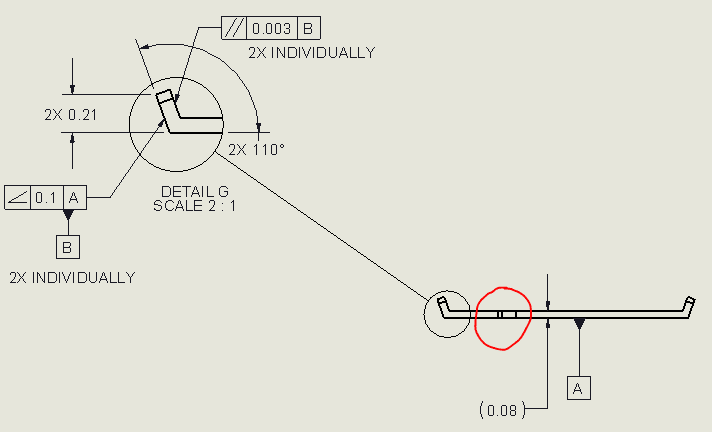I am little new to GD&T, and haven't used it with a multiplier to indicate instances before, normally I would just mark them independently but due to space issues in this drawing I want to keep it clean and neat.
My question is, am I using it correctly, the intention is to portray that both side edges are identical, I am not sure if the same rules apply to GD&T as they do for normal dimensioning, i.e. using 2X for a dimension that is repeated.

Thanks!
My question is, am I using it correctly, the intention is to portray that both side edges are identical, I am not sure if the same rules apply to GD&T as they do for normal dimensioning, i.e. using 2X for a dimension that is repeated.

Thanks!


